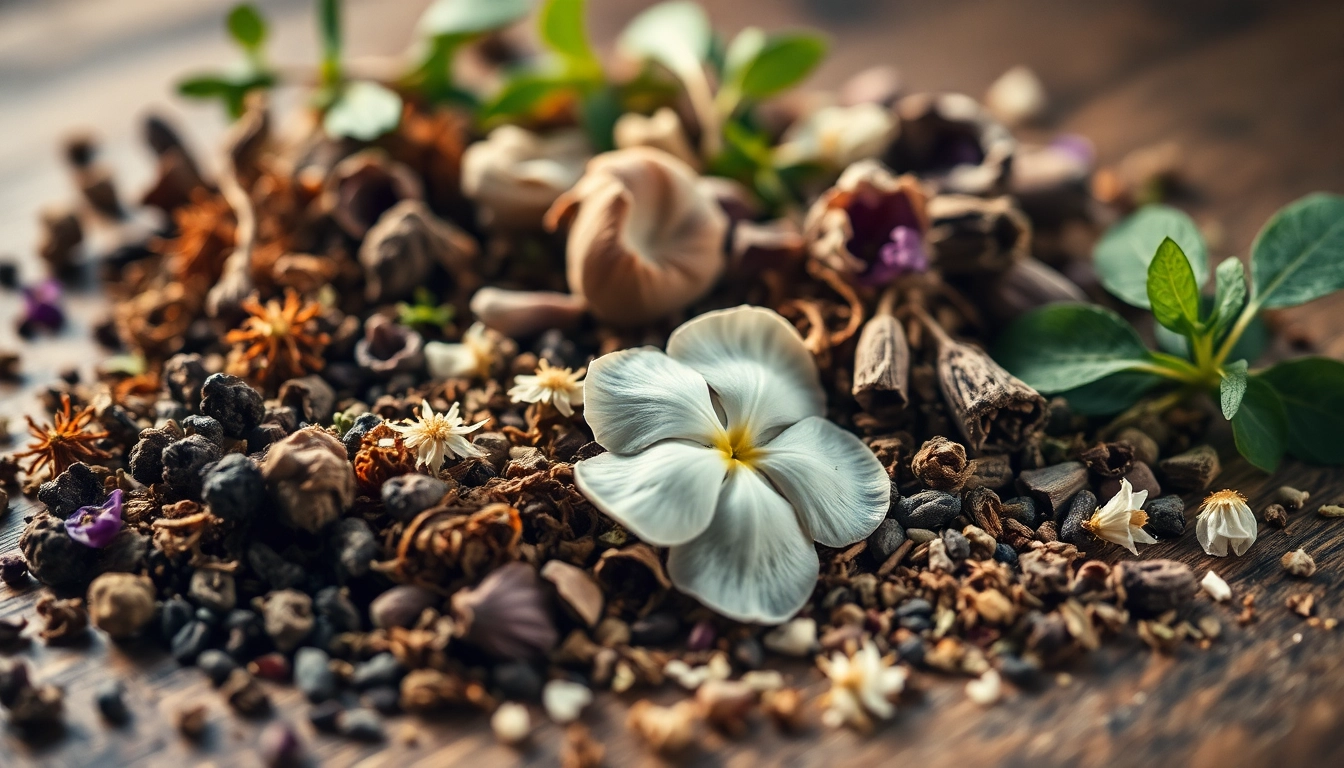Understanding Alternative Smoking Blends
Alternative smoking blends are mixtures of various herbs, botanicals, and flowers that offer a natural alternative to traditional tobacco products. These blends are gaining popularity among those seeking to enjoy the act of smoking without the harmful effects associated with tobacco. By incorporating a variety of herbs, users can tailor their smoking experience to match their preferences, whether they’re looking for relaxation, stimulation, or social enjoyment. For more insights and information, check out the Alternative Smoking Blend resources.
Definition and Benefits of Alternative Smoking Blends
Alternative smoking blends serve as a substitute for tobacco, containing a range of herbs that can offer an array of effects. Unlike traditional tobacco, many of these herbs do not contain nicotine, making them potentially less addictive and harmful. One of the primary benefits of using alternative smoking blends is the ability to customize the experience; users have the freedom to choose different ingredients based on their desired effects. Furthermore, many herbs used in these blends are rich in beneficial compounds such as terpenes, flavonoids, and other phytonutrients, which may promote overall wellness and relaxation.
Common Ingredients in Alternative Smoking Blends
Common herbs found in alternative smoking blends include:
- Chamomile: Known for its calming properties, chamomile can help promote relaxation and relieve stress.
- Passionflower: This herb is often used to alleviate anxiety and promote sleep.
- Mint: Provides a refreshing flavor and can help with digestion.
- Damiana: Traditionally used as an aphrodisiac, this herb may enhance mood and energy levels.
- Lavender: Known for its soothing aroma, lavender can help in reducing stress and promoting tranquility.
- Rosemary: This herb is associated with mental clarity and can stimulate memory and concentration.
These herbs can be combined in various ways to create unique flavors and effects, allowing users to craft their ideal smoking blend.
Health Considerations for Users
While alternative smoking blends are often viewed as a healthier choice compared to traditional tobacco, it is important for users to consider several factors:
- Respiratory Health: Even herbal smoke can irritate the lungs, so users with preexisting respiratory issues should approach with caution.
- Allergic Reactions: Some individuals may have allergies to specific herbs, so it’s vital to know your sensitivity before trying new blends.
- Quality of Ingredients: The source of herbs can impact their safety and effectiveness; always choose high-quality, organic ingredients.
Understanding these considerations is crucial for ensuring a positive experience with alternative smoking blends.
How to Choose the Right Herbs
Popular Herbs and Their Effects
Choosing the right herbs for your alternative smoking blend can greatly impact your experience. Here are some popular herbs and their associated effects:
- Cedar: Offers a slightly woodsy flavor and is said to help with grounding and calmness.
- Hops: Commonly known for their use in beer brewing, hops are also noted for their relaxant and sleep-promoting properties.
- Skullcap: Often used to help reduce anxiety and promote mental relaxation.
- Mugwort: Traditionally used in dream enhancement, this herb may help in achieving vivid dreams.
By understanding the effects of these herbs, users can better tailor their blend to meet their specific needs and preferences.
Combining Flavors for an Ideal Experience
Creating a balanced smoking blend can be an art form. When combining flavors, consider the following:
- Complementary Flavors: Herbs with similar flavor profiles, like mint and eucalyptus, can enhance each other’s characteristics.
- Contrasting Flavors: Interestingly, pairing a strong herb, like lavender, with a milder herb, such as chamomile, can create complex flavors that elevate the entire experience.
- Personal Preferences: Ultimately, the best blend aligns with your own taste preferences, so experiment to find what works best for you.
Safe Ratios for Blending
When creating your alternative smoking blend, finding the right ratios is key for achieving the desired effects without overwhelming your senses. A simple guideline to follow is:
- Use 30-50% of your primary herb, which defines the main flavor.
- Use 20-30% of secondary herbs, which support and enhance the primary flavor.
- Fill the remaining percentage (20-50%) with fillers that may include gentle herbs or flavor enhancers.
These ratios can be adjusted based on individual preferences and the specific herbs being used.
Steps to Prepare Your Alternative Smoking Blend
Tools and Equipment Needed
To create your alternative smoking blend, you will need some basic tools:
- Herb Grinder: A quality herb grinder helps achieve a consistent texture.
- Mixing Bowl: For combining your herbs efficiently.
- Storage Container: An airtight container is essential to keep your blend fresh.
- Measuring Scale: For accurate measurement of your ingredients.
Having the right tools can make the preparation process smoother and more enjoyable.
How to Grind and Mix Your Ingredients
Follow these steps to prepare your blend:
- Select Your Herbs: Choose your herbs based on desired effects and flavors.
- Grind the Ingredients: Use your herb grinder to achieve a fine, even texture.
- Combine in the Mixing Bowl: Thoroughly mix the ground herbs to ensure an even distribution of flavors.
- Test Blends for Flavor: Before finalizing your blend, roll a small amount into a cigarette or smoke it in a pipe to assess the flavors.
Storing Your Blend for Freshness
Proper storage is crucial for maintaining the potency and flavor of your alternative smoking blend:
- Airtight Containers: Use glass or high-quality plastic containers that minimize air exposure.
- Cool, Dark Place: Store your blend away from direct sunlight and heat to preserve its flavors and potency.
- Label Your Blends: Keep track of your blends by labeling them with the ingredients and date of creation.
By following these storage tips, you ensure that your blends maintain their quality over time.
Customizing Your Blend for Different Occasions
Creating Relaxation Blends
For those seeking a moment of peace and tranquility, calming herbs can be prioritized. A blend of chamomile, lavender, and passionflower can help you unwind after a hectic day. Experiment with varying ratios to find the perfect blend that suits your needs.
Blends for Social Settings
Social blends might incorporate more stimulating herbs to promote conversation and sociability. Blends containing rosemary, mint, and damiana may foster a lively atmosphere. Include herbs that enhance mood without overwhelming others in your group.
Themed Blends for Special Events
Creating themed blends for specific occasions can be a fun and creative experience. For a relaxing beach day, consider using tropical herbs like hibiscus and coconut. For festive celebrations, create a blend with bright flavors like lemon balm and orange peel. These tailored blends can enhance the overall enjoyment of the event.
Evaluating Your Alternative Smoking Blend
Taste Testing and Adjustments
After crafting your blend, it’s essential to conduct taste tests. Smoke it in small quantities to assess flavor, aroma, and effects. If certain flavors overpower others, make adjustments by adding milder herbs or reducing stronger ones.
Gathering Feedback from Users
Sharing your blend with friends can provide valuable insights. Ask for feedback on flavor, smoothness, and the overall experience. This can help refine your blend further and create something truly enjoyable for yourself and others.
Tracking Performance and Enjoyment Levels
Keep a personal journal to track each blend you make. Note the ingredients, ratios, and individual experiences. This record can help guide future blending efforts and lead to the perfect alternative smoking blend that satisfies your palate and desired effects.



